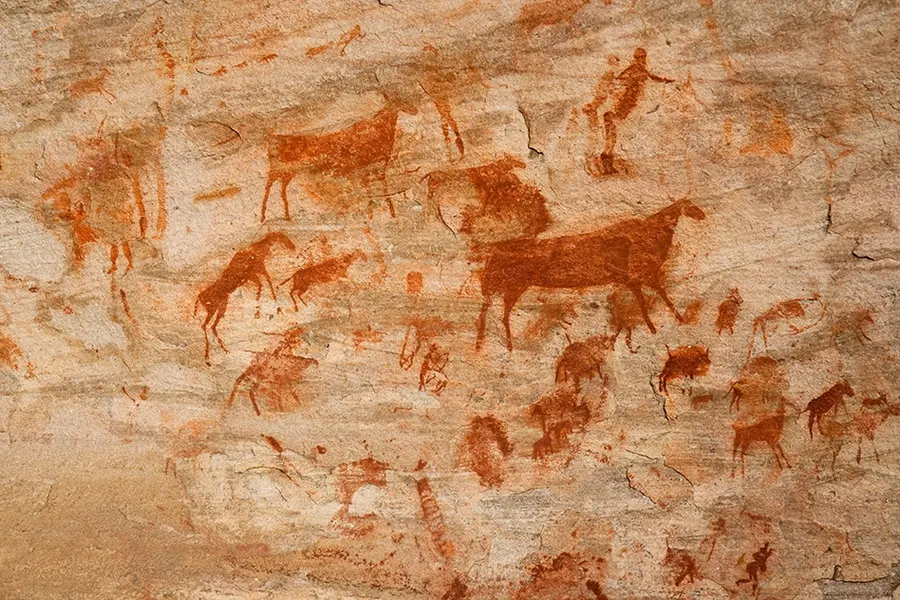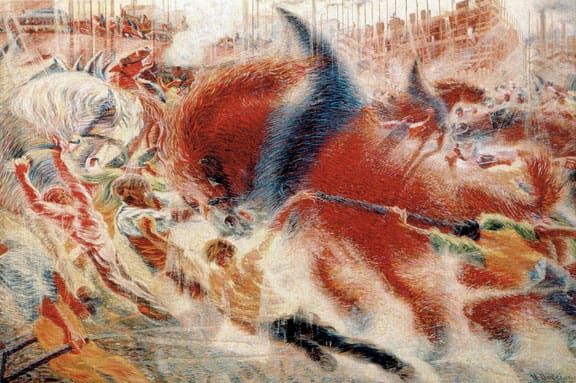Architecture and Art Introduction is the first article of a series of articles about the art dimension in architecture. These articles serve several goals. First, the discovery of art development, the art interaction, role in architectural design. Second, art’s role in developing the architectural discipline. Third, the art effects on the other disciplines involved in architectural design in practice. The role and the art dimension in the creation of architecture form, function, structure, space, and urban space.
Art appearance and development
Throughout history, humans have developed art since the Old Ages see figure 1, living in caves and beginning to draw on cave walls. Humans have developed an art sense gradually, and humans have used art in many ways and applied it in various areas of life. Art used by humans has no principles or guidelines, but rather the primitive ways of using them. When humans fulfilled their basic needs, they approached the creation of tools, crafts. Humans also developed the spaces they lived in and the art application methods they used gradually.

Through artwork, humans gradually either commissioned or involved artists voluntarily in the design of buildings. Indeed, that includes the shelters they live in, homes, buildings, and places of worship. Artists became one of the main contributors to the architecture of buildings. Also, they became builders and practice builders. Examples from history show that builders supported by their artistic sense have developed architectural styles. Definitely without a former architecture education before academia appeared. Artists invented various methods and techniques to produce art, and art movements and styles appeared.
Various forces, such as social, economic, political, and even environmental, have a direct effect on an artist’s life and production. Art styles throughout history show an intervention between various factors and forces leading to the style’s creation. These styles and art movements have had a direct effect on architecture since ancient times. That’s apparent in analyzing ancient Asia and the Middle East, European, and Western architecture. Examples range from ancient Mesopotamia, Egypt, Asia, Greece, the Roman Empire, the Byzantine Empire, and modern Europe.
Architecture and art role in creating simple ways of construction
Architects, builders, by adopting art styles in the creation of architecture, came up with simple forms. In many cases, architects, by applying art to architecture, come up with complex architecture. This architecture needs special attention, especially when it is constructed like the Pantheon in Rome. Indeed, this led to the invention of simple ways of constructing arches, domes, arcades, and so on. Throughout ancient history, architects supported by art created complex architecture and structures, leading to the invention of complex methods of construction. Examples are available of ancient cathedrals in Rome and Paris.
Artists created their own followers. These followers attended informal classes of art education. Because these educators were artists and officials, nobles commissioned them to do the architecture of buildings. They taught followers their findings and principles of architecture and building. Day by day, with the support of society and people who have wealth and believe in art. Wealth and belief in art caused the creation of schools to teach educators art principles. These schools created certain staff guidelines for creating art and architecture. The educated followers and enrollers in these informal schools got direct involvement in applying the taught principles in creating architecture.
Society got noticed by this massive change in teaching and applying art principles in architecture. Architecture became familiar in society as an important job that supports a wide range of social groups. Examples of these informal schools are from Italy, Greece, France, and the Western world.
How does art intervene in architecture?
Art is the medium for innovative two-dimensional and three-dimensional creation using materials like color, wood, textiles, and other materials to represent personal or group thoughts see Figure 2. Art intervenes in architecture in representing ideas and representing relationships. Representing ideas comes in various forms sketching, colored shapes, and massing through 3d forms. As for relationships either by two-dimensional composition or three-dimensional composition of the relation of masses or shapes and mass in space.
Art intervenes in architecture in the creation process of architecture form, in the creation of functional relations of a building. The use of art is behind the architecture’s success in supplying beautiful and comfortable spaces indoors and outdoors. Art is behind the success of the architect’s design of interior spaces color combination and material selection. see figure 2 artists showing city in a painting of different colors.

Artists created architecture and art schools
After art became widespread in society and when people acknowledged its importance, many people wanted to enroll in art studies. Artists and their supporters created art schools to teach the principles of art. These include dealing with colors, shapes, depth, light, composition, and even art effects in architecture. In the late 15th century, art movements appeared and art styles spread throughout the Western world and Asia. Graduates became artists, and the artist’s job spread in society, and many talented artists appeared, especially in Italy, France, Greece, and Russia.
The introduction of art schools created a type of people who deal with a specific type of drawing. Since these artists who created the informal schools had direct involvement in the creation of architecture and building. They took the responsibility for teaching and preparing architectural drawings. Artists, before the appearance of formal architecture schools, prepared architecture drawings like plans, elevations, and perspective drawings for buildings.
These artists who taught art principles and guidelines of architecture and art became informal architects, and the profession of architects appeared. Many of these teachers attempted to write a booklet on architectural principles of design, originally from Italy see figure 3 example of artist architecture in Rome the pantheon. As the number of art teachers became architects and wrote architecture design principles, booklets, individuals in society closely linked to architecture also established informal schools of architecture.

[…] Architecture and Art: Introduction […]
[…] Architecture and Art: Introduction […]
[…] Architecture and Art: Introduction […]
[…] Architecture and Art: Introduction […]
[…] Architecture and Art: Introduction […]
[…] Architecture and Art: Introduction […]
[…] Architecture and Art: Introduction […]
[…] Architecture and Art: Introduction […]